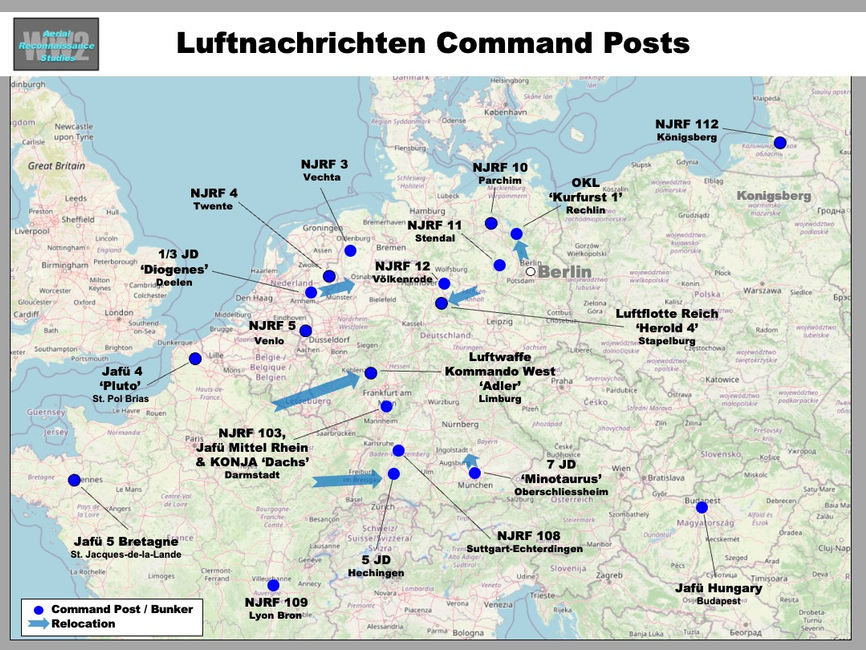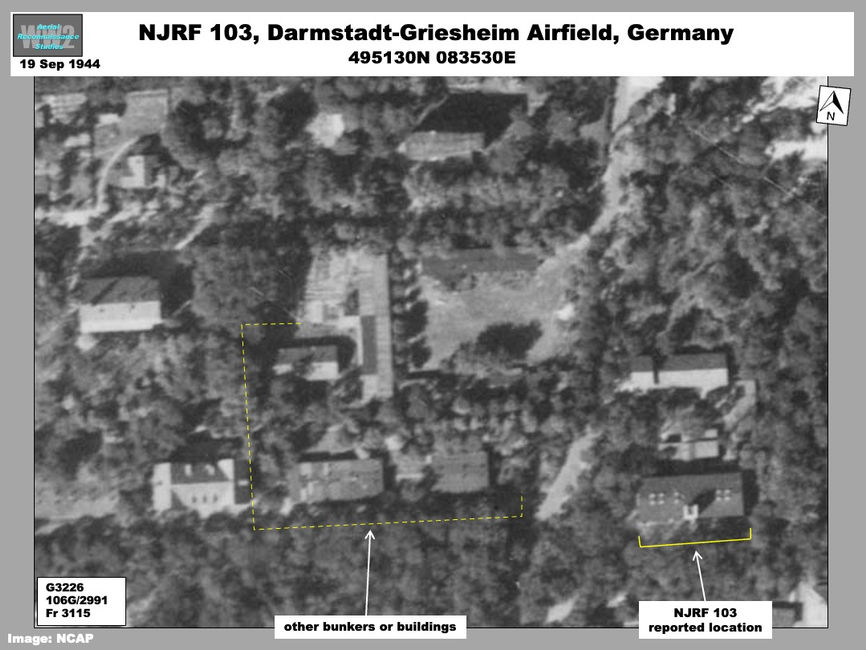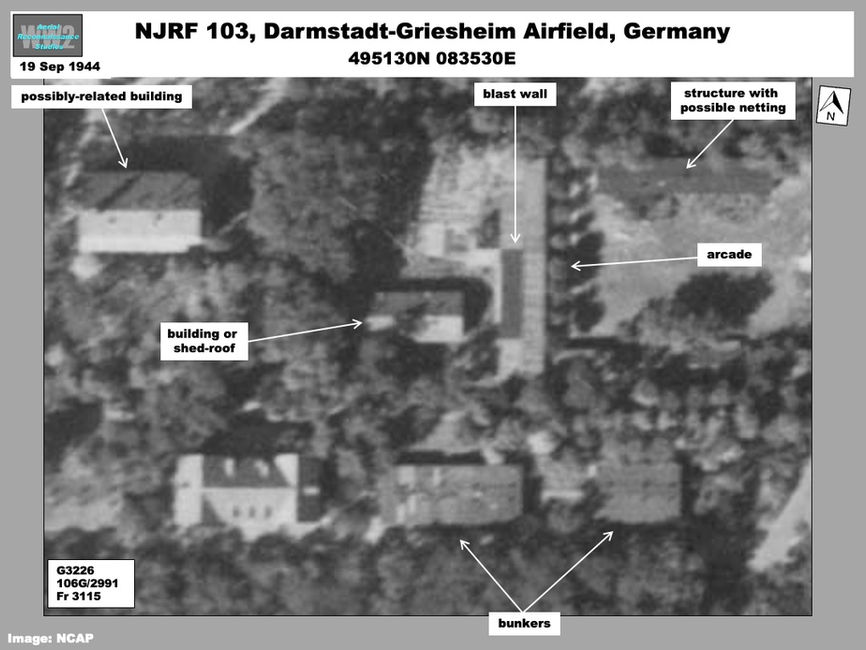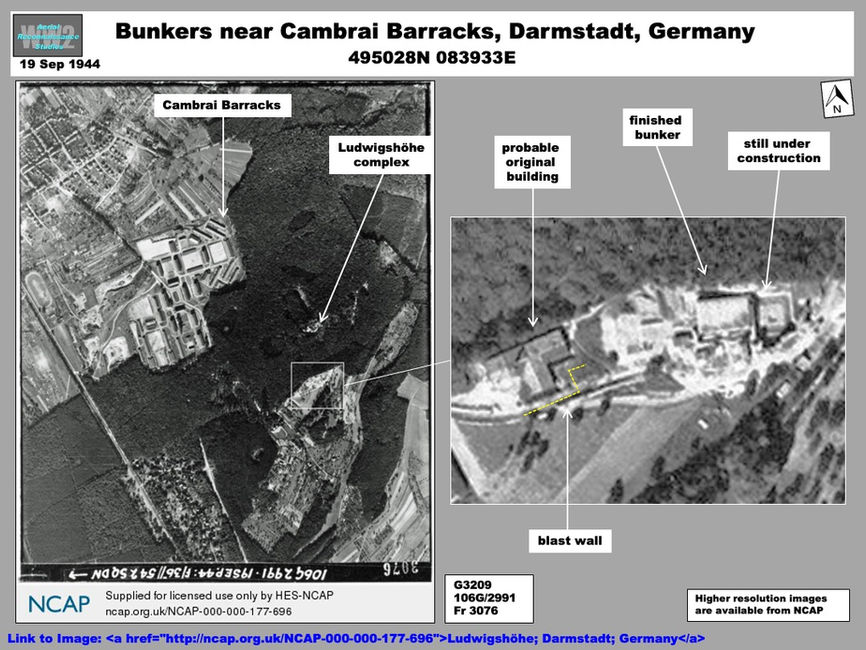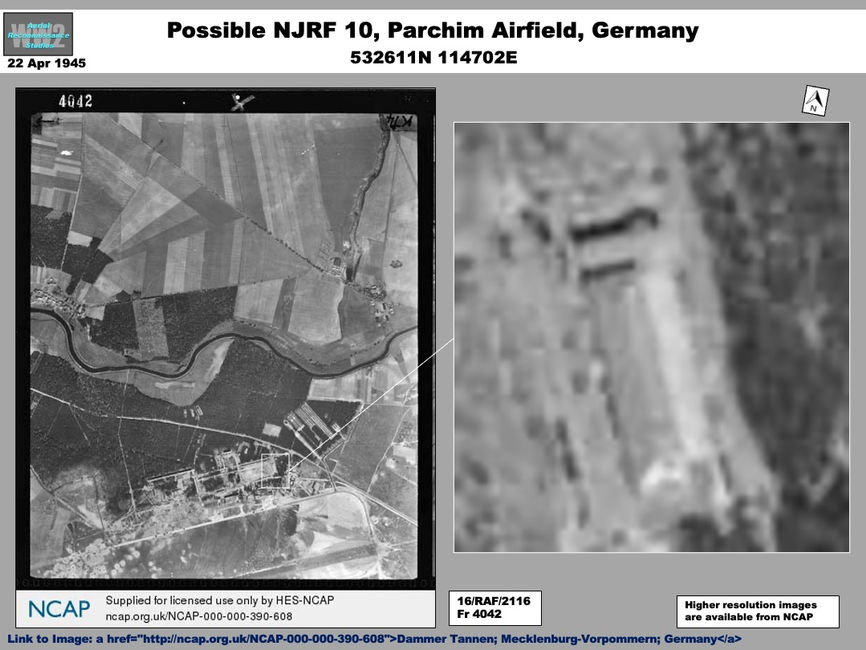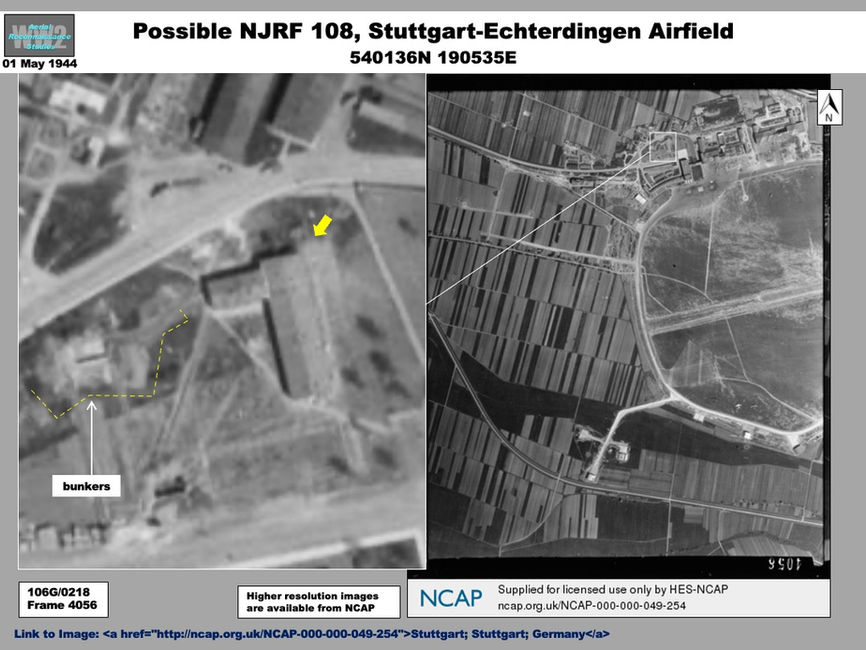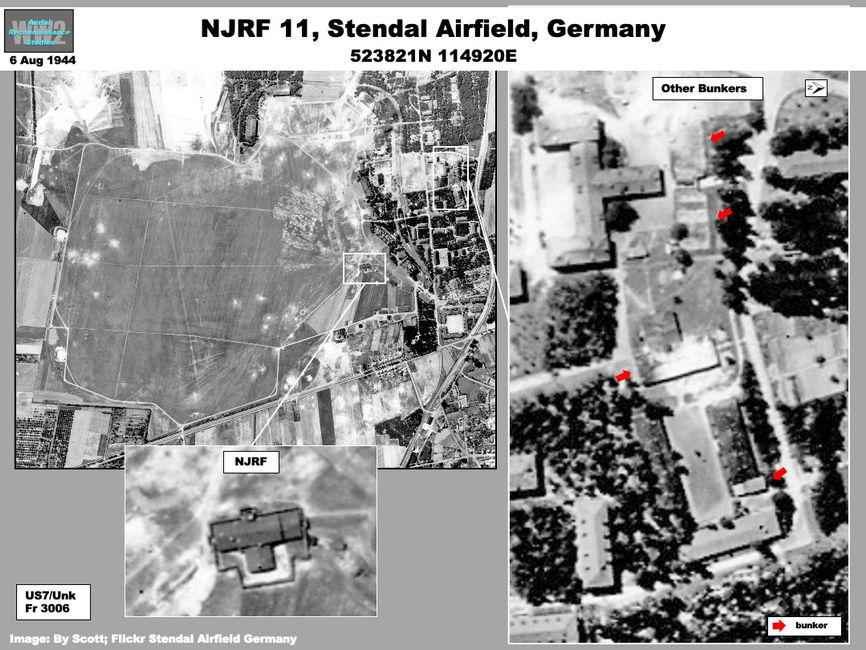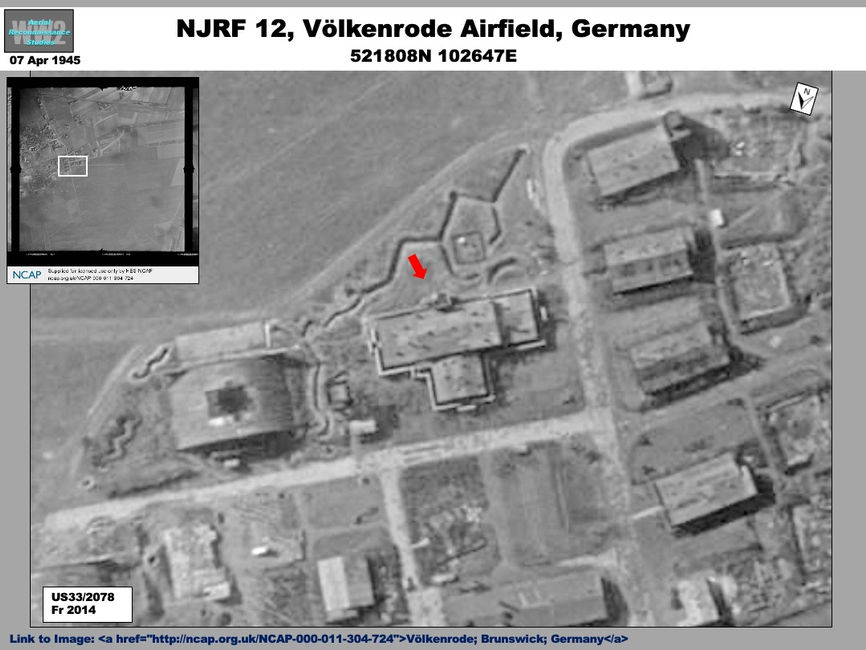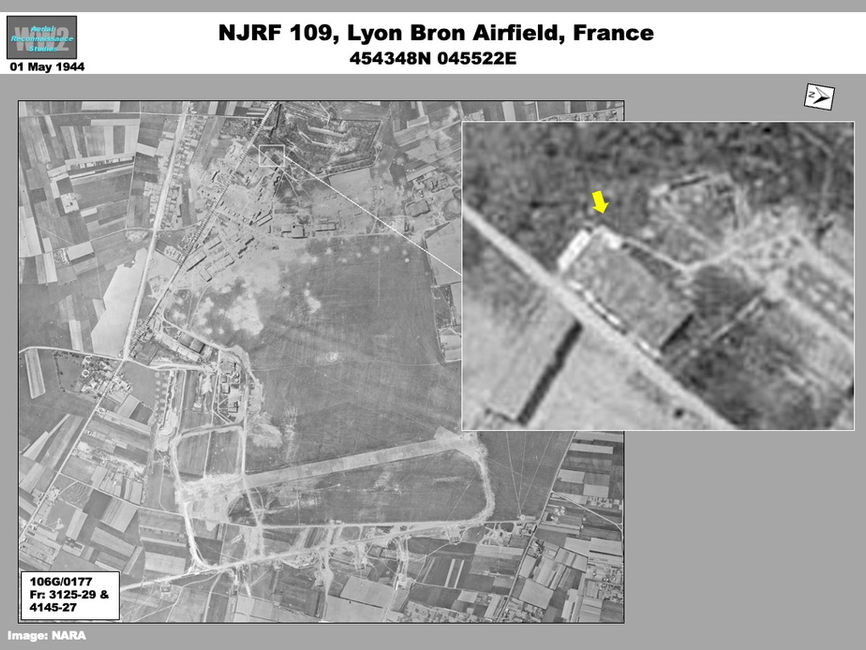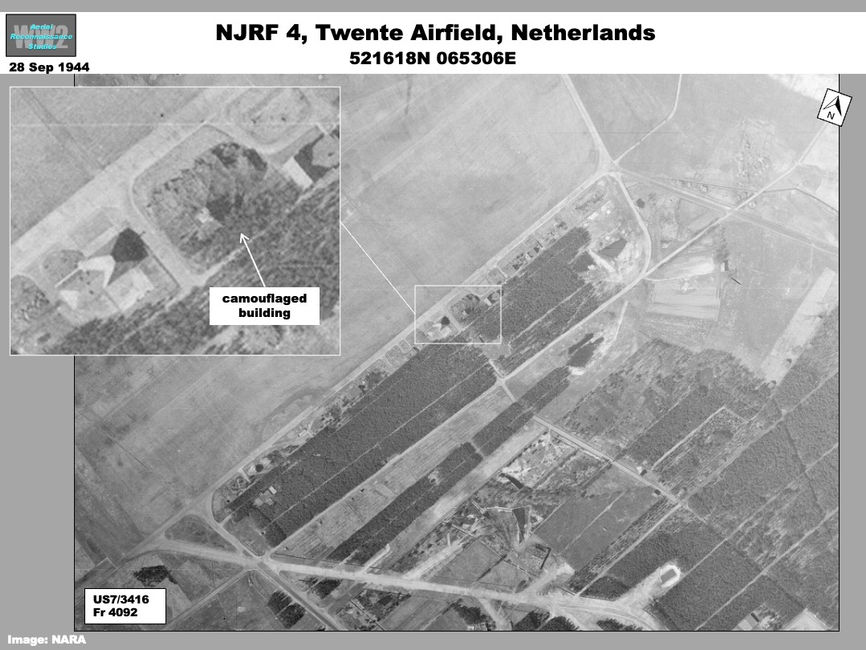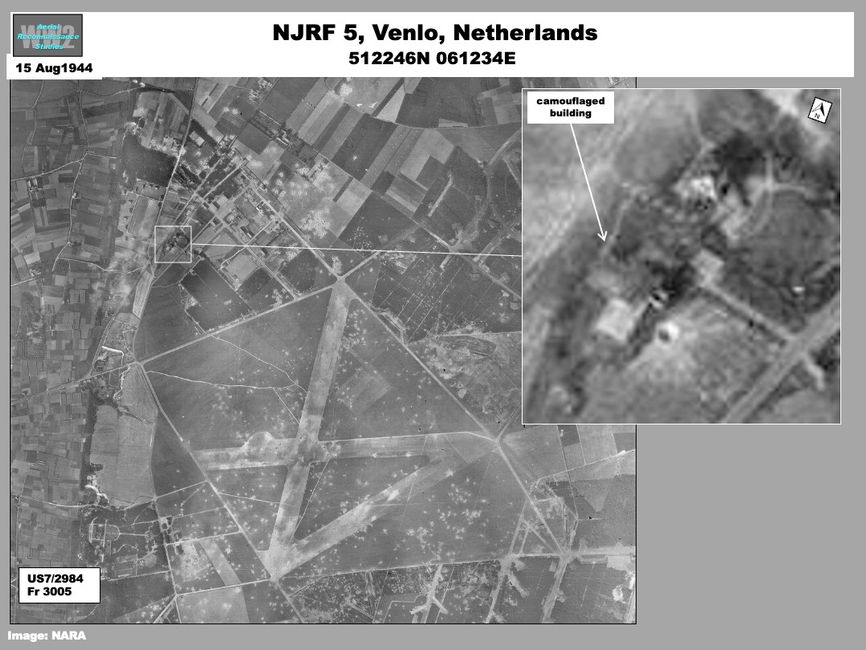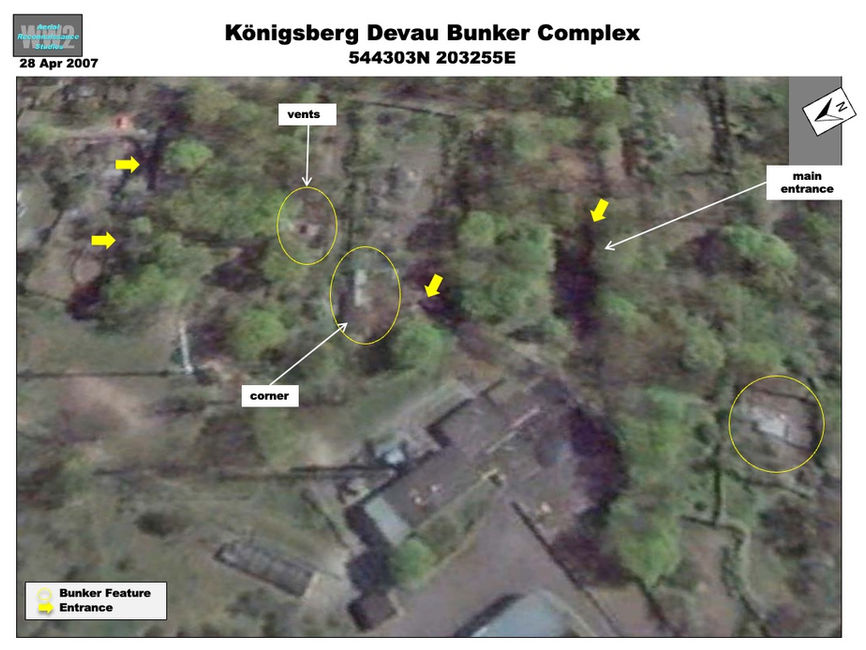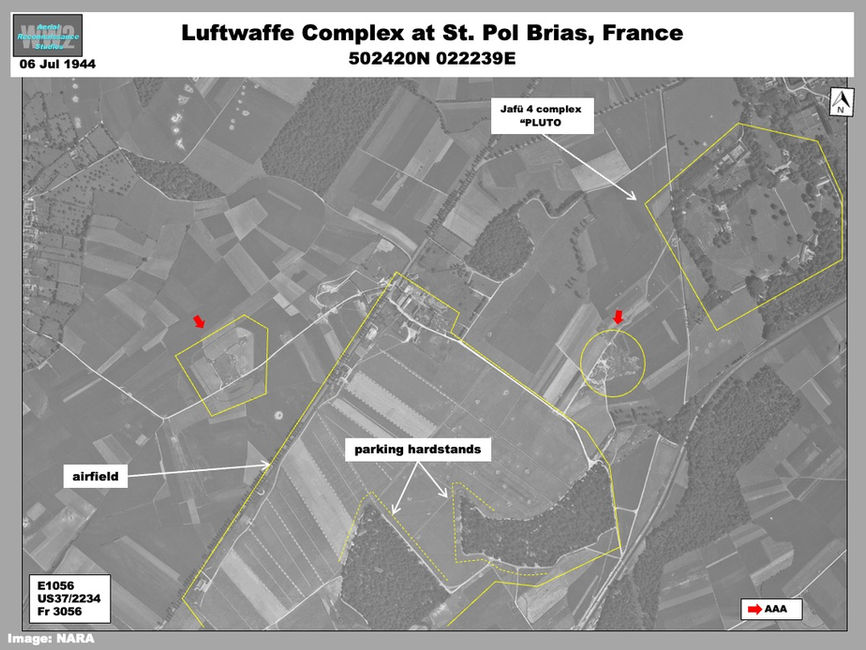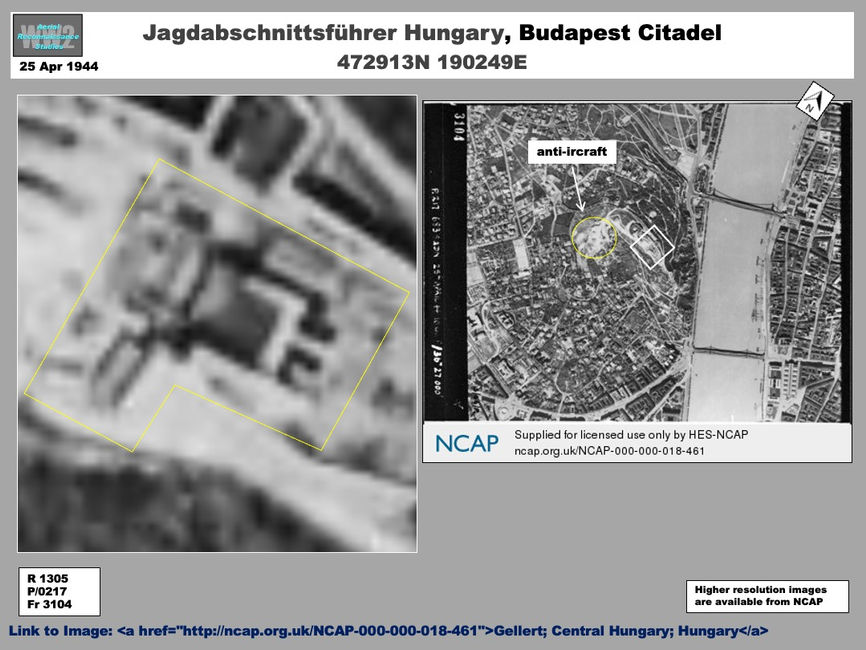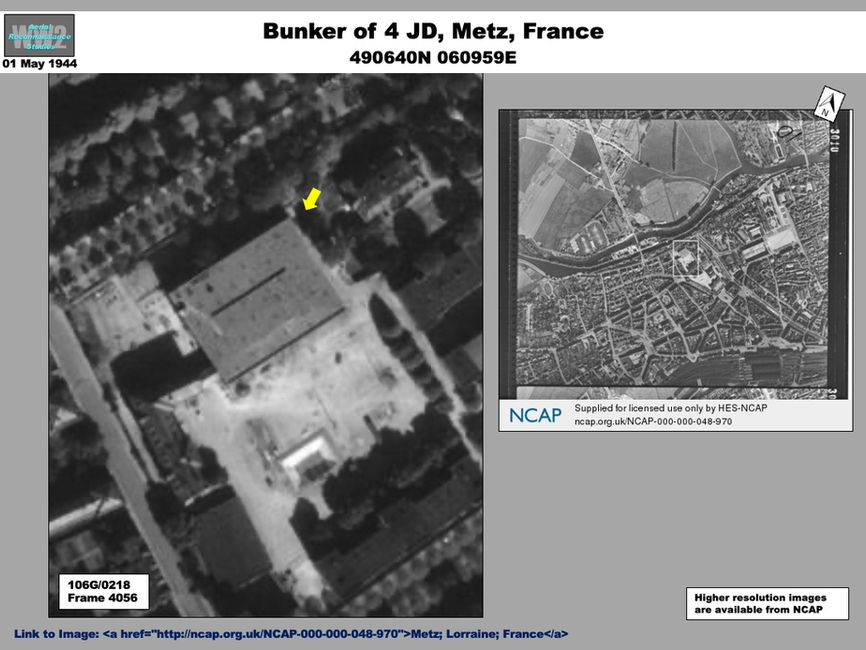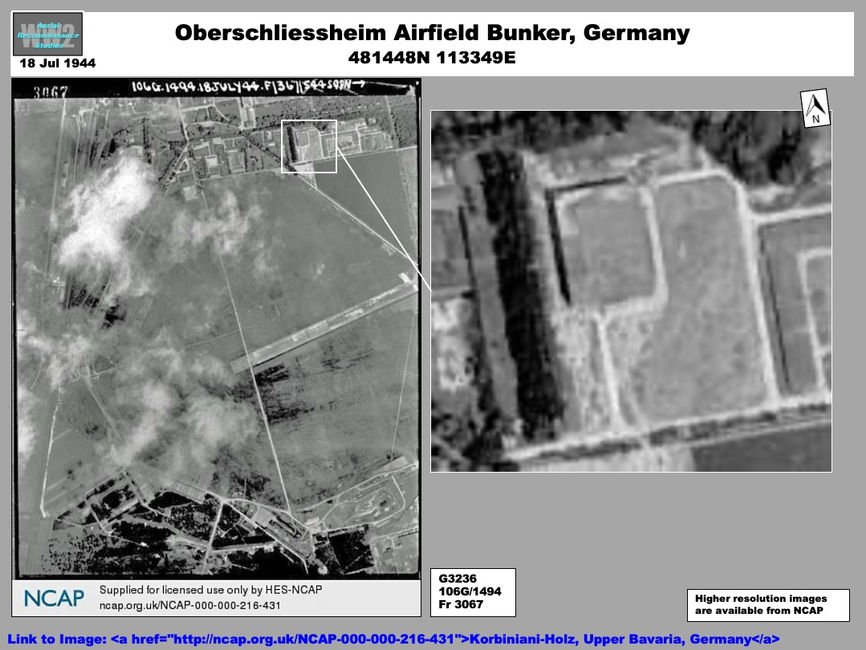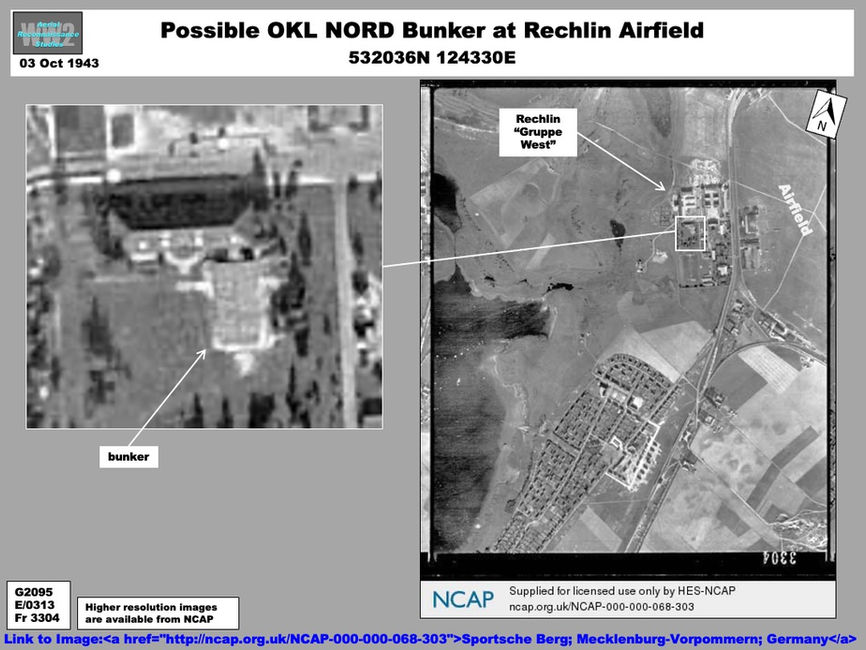WW2 AERIAL RECON STUDIES
Luftnachrichten Command Posts & Bunkers
Facilities & Installations
This article focuses on the facilities used by the Luftwaffe Intelligence Service (Luftnachtrichtendienst) to control Germany’s air defense network. Set up for night- and day-fighter control, these command posts filtered information about enemy aircraft from an extensive radar network (Flugmeldmess), coordinated data and directed a timely response.
Night-Fighter Control
Night-fighter control was initially accomplished by the Nacht Jagd Raum Führer (NJRF). A prime example of the evolution of one of these facilities is NJRF 103 at Darmstadt-Grieshein Airfield (Map). NRJF 103 operated between July 1942 through June 1944, when it became Jagdfliegerführer (Jafü) Mittel Rhein. Located in the support area of the airfield, the NJRF bunker was a rectangular, partially above-ground structure. A U-shaped probable weapons position was on the roof. Another building and a possible underground machinery room were nearby (Graphic 1).
By mid-1944 the Jafü Mittel Rhein/NJRF 103 complex extended west of main building and included at least two other bunkers and a central building protected by a blast wall. Walkways appeared to lead from the road through both other bunkers and to the central building (Graphic). A prominent feature of the complex was an arcade and a hedge that screened the central building and blast wall from view. Possibly associated facilities included a structure (possibly net-covered) and a larger building northwest of the central area. In an attempt at visual disruption, possible netting appeared to have been laid on the ground west of the arcade (Graphics ).
A related command post, Kombinierte Nachtjagd (KONAJA) 'DACHS,’ was established at Darmstadt for the 21st Flak Division in 1941. The command post was most likely at the base of a hill known as the Ludwigshöhe, 5 km east-southeast of the airfield and near the Cambrai-Fritsch Kaserne. This facility contained a barracks, two bunkers and a T-shaped building with a blast wall (Graphic ). Later, the command post was reportedly moved to a hotel complex atop the hill, but another bunker (still present) there did not appear to have been finished by September 1944.
More typical NJRF facilities could be seen at seven other locations, four in Germany, one in France and two in the Netherlands. In Germany, NJRF 10 operated from Parchim Airfield between July 1942 and July 1944 (Graphic). Coverage from April 1944 showed one type of NJRF building, which was --as often the case-- set within blast walls. Another type of NJRF building with a T-shape probably comprised NJRF 3 at Vechta airfield. NJRF 3 operated between- July 1942 to February 1944 and coverage between August 1944 and January 1945 revealed the roof and interior of the building were dismantled (Graphic). The building had probably been camouflaged, as fencing for netting could be seen around the structure in August. NJRF 108 at Stuttgart-Echterdingen appeared to be an L-shaped building with several smaller bunkers nearby (Graphic).
NJRF 11 and NJRF 12, at Stendal and Völkenrode Airfields respectively, also used T-Shaped buildings protected by blast walls.(Graphics). However, NJRF 11 between July 1942 and January 1944 (operated between July 1942 and January 1944) was accompanied by a complex of other bunkers in the airfield support area. Analysis of imagery coverage of the complex between 1943 and 1945 revealed it had at least four bunkers with multiple entrances . The main bunker--a rectangular structure-- had a-camouflaged entrance building and was enclosed by a blast wall.
In France, (Graphic). A review of imagery reveled that there was no structure at the assessed the probable building for NJRF 109 was in the support area of Lyon-Bron Airfield. It was a rectangular building set under the walls of an old fortress with several small bunkers nearby location of NJRF, a building foundation 2600 meters to the south-southeast (454226N 045446E).
In the Netherlands, coverage of NJRF-4 and -5 at Twente and Venlo Airfields revealed both were probably T-shaped buildings, but were both covered with camouflaged netting (Graphics). They operated between July 1942 and February 1944.
The facility for what was likely NJRF 112 at the East Prussian city of Königsberg (Kaliningrad, Russia) was very different from the others. Analysis of imagery from August 1944 revealed NJRF 112 was in a barracks one kilometer southeast of Königsberg Devau Airfield (Graphic) that is still in use as a Russian naval communication facility. In 1944 there were at least two bunkers at the facility. Bunker 1 --the main building-- was built into a hillside and was well-concealed with vegetation. Bunker 2 was a linear structure at the south edge of the complex. Some features of NJRF 112 bunker 1 were hard to see in 1944, but what can be seen on recent satellite imagery suggests It was expanded after the war (Graphic).
Day-Fighter Control
Day-fighter control was performed at Jagddivision (JD)- and Jagdfliegerführer / Jagabschnittsführer (Jafü)-level. The command post for Jafü 4 (4 JD, Metz) at St. Pol Brias in the Pas-de-Calais was an excellent example of one of these facilities when operational. The command post bunker, code named 'PLUTO', occupied a complex on the grounds of a chateau, where it was first located. The Jafü 4 complex --including the bunker, outbuildings, chateau and an airfield-- was covered on 29 May and 6 July 1944 (Graphic). The bunker (L479-type), at the edge of a wooded area, could not be seen on either image, but net-covered walkways and structures near the entrance were visible. A support building along the main walkway was also net-covered (Graphic). Ground photos of the ruined bunker revealed it had two levels and was about 25-meters-long (Graphic).
Except for the possible removal of some camouflage at the bunker, few changes were noted between May and July. A fence had been erected along the northwest perimeter and evidence of construction was less visible. A pile of earth, probably spoil removed during construction could be seen nearby. The airfield, southwest of the bunker, was used in 1940 but by 1944 was likely not in use, but at least three anti-aircraft sites in the vicinity were probably for the benefit of the command post.
Also in France, the bunker for Jagabschnittsführer Bretagne at St. Jacques-de-la-Lande Airfield was similar to the one for Jafü 4 (Graphic). Coverage from June 1944 shows the camouflaged bunker set in an open area away from support buildings.
The command post Jagdabschnittsführer Hungary located in the Citadella at Budapest and was unique in appearance (Graphic).
The command posts of 4th, 7th and 1/3 Jagd-Divisions all had large, rectangular, above-ground bunkers. The one for 4 JD at Metz, France was situated in the center of the city (Graphic). Similar buildings for 1 JD (later 3 JD) and 7 JD were both at airfields (Graphics). The 1 JD command post, codenamed 'DIOGENES', relocated to Wiedenbruck in September 1944. The 7 JD command post --codename 'MINOTAURUS'-- was operational between October 1943 and July 1944 before relocating to Pfaffenhofen.
In September 1944, the command post for 5 JD at Villacoubly, France relocated to the Villa Lindich at Hechingen where it operated through December (Graphic). The site appears to have been prepared before the arrival of 5 JD. Seven additional buildings had been constructed near the villa with three relatively new power or telephone lines running to the facility.
Higher-Echelon Command Posts
As the war came to a close, the command staff of even high-level Luftwaffe command post were forced to relocate. The command post for Oberkommando der Luftwaffe (OKL Fürhrungs Nord 'KURFÜST 1') deployed from Berlin to Potsdam by 23 April 1945, before reaching its final destination, Silberstedt, Schleswig. On the way 'KURFÜST 1' briefly operated at Rechlin Airfield, where it occupied a building in the officer's housing area. Coverage of Rechlin on 3 October 1943 shows the probable location of the command post was a bunker attached to the probable officer's casino in the airfield western support area (Graphic).
In February 1945, the staff of Luftflotte Reich deployed from its command post at Berlin-Wansee. The staff, codenamed 'HEROLD 4', operated from a facility in an ammunition depot at Stapelburg through April (Graphic) before moving on to Quassel.
The command post of Luftwaffe Kommando West, which originated in Paris as Luftflotte 3, arrived at Schloss Dehrn, near Limburg-an-der-Lahn on 26 September 1944 (Graphic). On the way to Germany, the command post --codenamed 'ADLER'--also stopped at Riems, France and Arlons, Belgium. A review of available imagery revealed four light anti-aircraft sites were deployed around the schloss before the arrival of the command post, sometime between 25 August and 25 September; in addition, a possibly net-covered position was set up in a nearby orchard after 25 August.
